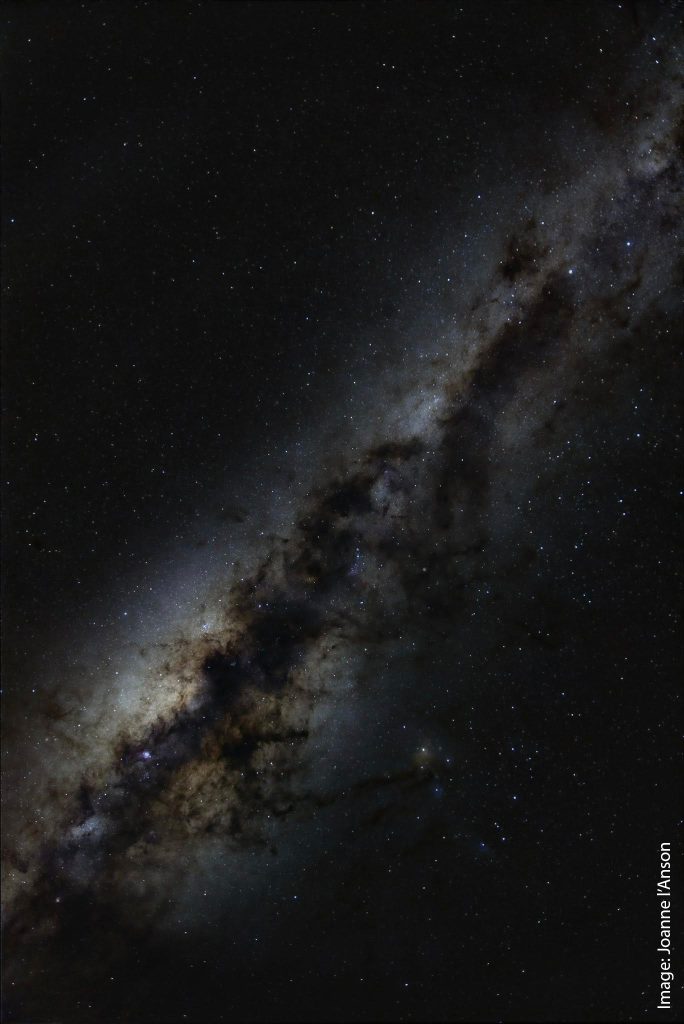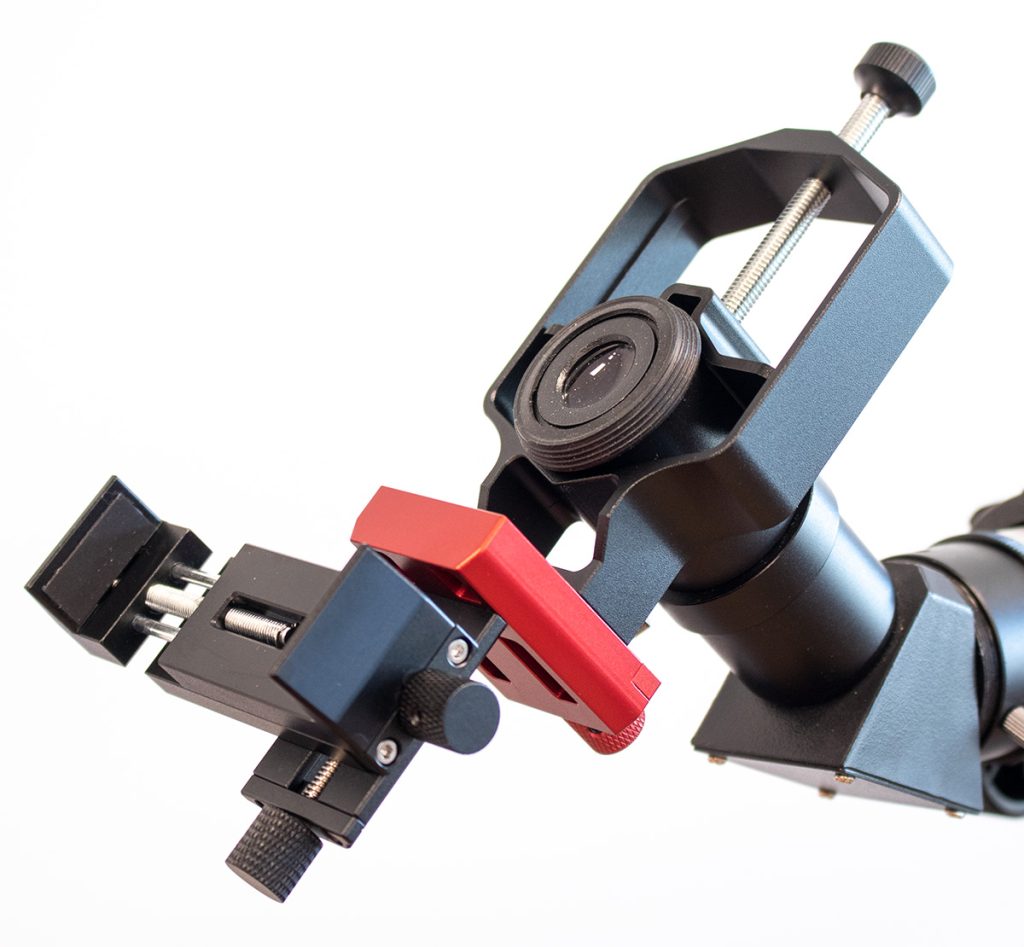Getting a telescope for an inquiring mind is a fantastic idea. You don’t have to spend huge amounts, but a gift telescope that either disappoints or befuddles the recipient is likely to turn them off astronomy. We call this a “hobby killer”.
Getting someone their first telescope?
Lots of people want to get their kids (and others) telescopes as gifts. Of course, this is relevant at any time of the year, as “young astronomers” have birthdays at regular intervals, but it’s especially relevant at Christmas. I was doing a spot on the radio a couple of weeks ago and was asked about my gift suggestions. Being contrary, I immediately leapt into a rant about what you should avoid!
A telescope is a wonderful gift for a kid with an inquiring mind. Like dinosaurs, astronomy (especially planets) is something that young kids engage with enthusiastically. It’s also something that can stay with a child for life – I’m evidence for that.
I’ve got a list of great first scopes at the bottom of this article.
But my rant? Telescopes can be expensive and complicated. And if you get the wrong one, you can discourage, rather than encourage the young astronomer. No kidding, Google “hobby killer telescope” to see what I mean.
What is a hobby killer?
This is a telescope that is so bad that it’s very likely that scope is never going to see the light of night again. A new astronomer will learn that struggling to look through a dim, wobbly, toy telescope is frustrating and that astronomy is unrewarding.
Down the bottom I’ve got an example of a telescope that was actually on sale while I was writing this.
But there’s another sneaky type of hobby killer. How about a sophisticated, expensive, professional-grade telescope, that takes ages to set up and align before anyone can actually get those great views? This type of instrument is just as likely to stay in the cupboard than the cheap wobbly toy telescope!
Typically, you’ll find hobby killers on websites. There are shops all around – not just ours – where people will help you make an informed choice. If you can look through a telescope, even during the day, you’ll be able to tell if it’s too wobbly, too complicated, or too big to use.
How do I get a good scope?
Here are my tips to help you avoid turning off a young astronomer. I’d like these to help everyone, especially those parents who can see a genuine curiosity in their kids, even if they might not know much about telescopes themselves. With experience, you can get around many of these issues, but the idea is to avoid the headwinds.
Aperture – the bigger the better
This is the size of the opening at the front of the telescope. The larger the aperture, the more light gets in, and light is the raw material for your image. If the aperture is too small, what you see is going to be dim, and unless you’re looking at the Moon, you’re not going to see much at all. And a late hint: if the description of the telescope doesn’t say what the aperture is, you can bet it’s not enough!
For a refractor to be useful, the absolute minimum should be 70mm, and preferably 90mm. I’ve seen refractors down to 40mm – honestly, something like this is only good for spotting things during the day.
Reflectors tend to be larger, because they’re cheaper to make. I’d say for a reflector a minimum of 130mm is a good size. If you can manage a 150mm or even 200mm Dobsonian scope, you’re flying!
Magnification (focal length) – not too much
Magnification in a visual telescope is a function of the telescope’s focal length (more length, more magnification) and the eyepiece’s focal length (more length, less magnification).
But beware: magnification is not always your friend. Too much magnification and the bit of sky you’re looking at gets so small that you’ll have trouble even finding that planet.
One of the limiting factors for magnification is Earth’s atmosphere. Air isn’t really all that transparent. Worse, air has warm and cool patches that cause lensing effects, and these swirl around constantly, mucking up your view. Higher magnification only exacerbates this, and on warm nights it can be impossible to get a decent view of anything.
Hobby killer telescopes often have huge magnification claims on their boxes, such as 200x or more, and in some cases much higher. Don’t fall for this – 65x (which is what you get with 650mm focal length and a 10mm eyepiece) is enough to see a small image of the rings of Saturn. Saturn is incredibly small, and more magnification than this will only show you a swirly blob.
Design – can you manage a Dobsonian?
Refractor or reflector? If other aspects of the scope are right, both are good. Refractors are robust, and don’t require adjustment, but reflectors give you more aperture for your buck.
The Dobsonian reflector offers you the best image for the money – they’re fantastic starter telescopes, and astronomical societies often use them out as loan scopes. There’s a disadvantage though – they can be large and heavy. The smaller type that sits on a table, on the other hand, can be brilliant.
Late hint: if you’re considering a reflector, and the tube length is less than the focal length, you’ll be looking at a Bird-Jones design. These are great until you need to adjust the collimation – and then they’re a nightmare. Best left alone.
Mount – forget the equatorial for now
Another choice you have is the mount. There are two main types – alt-azimuth, which means it moves left-right and up-down, and equatorial – meaning it moves in circles to follow the stars (this is the one with the counterweights).
The clear winner here for a first scope is the alt-azimuth type. It’s easy to understand and doesn’t take ages to set up and adjust like the equatorial type. You won’t need an equatorial mount until you get into astrophotography.
But the mount needs to be solid. If your telescope wobbles around when you try to keep up with that planet, it’s not worth it. Having “slow motion controls” is a big plus – you can gently adjust the mount to track your target without having to shove it with your hands.
Computer – can be a good idea but it takes practice
Some telescope mounts have computers (either in a hand controller or in a phone app). These are absolutely brilliant – they’ll find those hidden targets and track them so you can just gaze.
But it can be a two-edged sword. Not only do they need power, they can be fiddly to set up. The alignment process means you need to set the time, date and location, and then accurately point the scope at a few named stars before it can take over. With practice, this can take only a few minutes, but the first time – I can guarantee – it’ll take ages. And while you’re fiddling with the alignment, the young astronomers have got bored and have gone inside to watch TV.
Expectations – are you expecting too much?
A pet hate of mine is telescopes that come with copyright-free Hubble photos of galaxies and nebulas on the box. I can’t think of a better way to set a new astronomer up for disappointment. The human eye just isn’t capable of seeing this type of thing, even with a million dollar telescope.
When anyone new starts to use a telescope, they’ll have some sort of expectation about what they’re going to see. Often, these expectations are a bit ambitious.
The Moon is big and bright, and it’s well suited to a small telescope, even one with the magnification cranked up. You’ll be able to explore craters and seas – it’s a strangely peaceful experience. You can also see the rings of Saturn or the moons of Jupiter, but realistically, planets are tiny objects, and unless the conditions are perfect, you won’t see much larger than a pea held at arm’s length.
So what is a good choice?
This is where I get to plug our products. Our aim is to create a genuine lifelong interest (and for us, lifelong customers), in astronomy and astrophotography. Because of this, we don’t sell a hobby killer. Here are a few suggestions for gift telescopes that, we hope, will keep on giving, leaving the recipient curious and eager for more. There are more possibilities as well, and if you’re getting confused, just give us a call.
Sky-Watcher 130mm (5″) Dobsonian
This is an example of a “table top” Dobsonian telescope. Being small, it sits on a table rather than on the ground. It’ll give you a good steady view of your target, so won’t frustrate you with wobbliness. Typical of a Dobsonian telescope, the mount is as simple as it can be, meaning your money has gone to the optics – which is what counts.
The 5″ Newtonian telescope will give you 650mm of focal length, which is just enough to see Saturn and Jupiter, but it’s great for the Moon. It’s also fantastic for when a comet comes past. But if you take this out of the city, you’ll find that the aperture will show you some deep-sky objects you’d never see with smaller scopes.
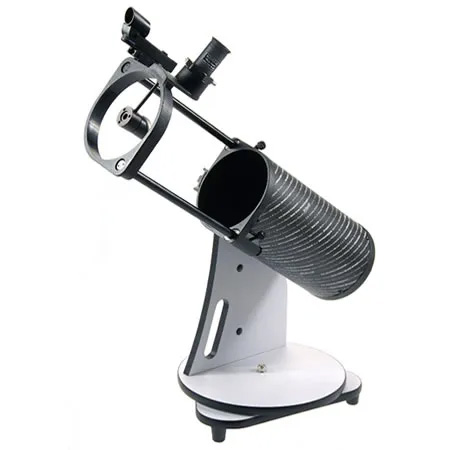
saxon 909AZ3 refractor
The saxon 909 is a 90mm refractor – that is, it has glass lenses. At 900mm, it will give you enough magnification to get a good view of Saturn’s rings and Jupiter’s moons, as well as getting a good close look at the Moon. The aperture is a little small to see anything but the brightest nebulas – Orion and Carina.
The AZ3 mount is robust enough to give you a nice steady view of whatever you’re looking at, even at high magnification. The slow-motion controls mean that as your target drifts out of view, you can chase it easily without having to manhandle the scope. But the best thing about the mount is that because it’s not an equatorial, you don’t need to align it to the sky. Just point the scope and you’re viewing.
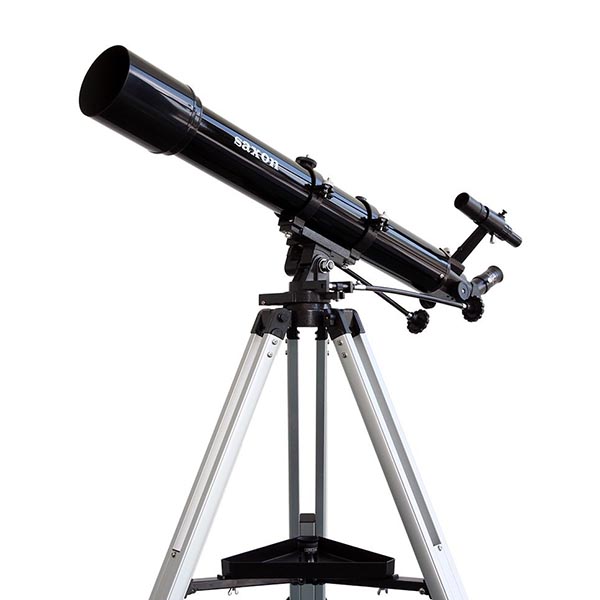
saxon AstroSeeker 13065
The saxon Astroseeker is a computerised alt-azimuth mount. In this bundle, it comes with a 5″ Newtonian telescope.
This is an entry level computerised mount, and when it’s set up correctly, you can have the mount find and track pretty much any target. It’s great for the Moon, and at a dark sky site it’ll show you some nebulas and galaxies too. Having the computer find targets for you is a fantastic way of discovering objects you’ve heard about but haven’t seen.
The mount can be a steep learning curve though, and it will take you a few goes before you’re comfortable and quick setting it up.
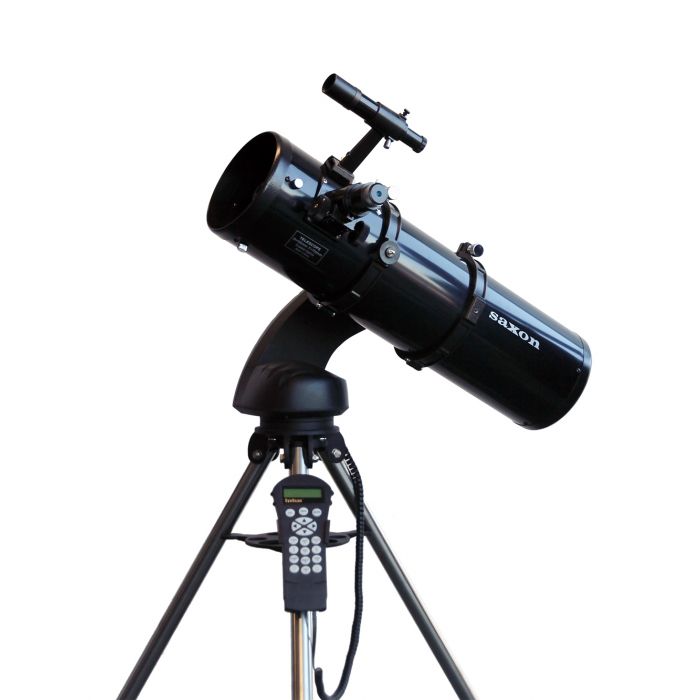
To sum up…
A good telescope will not only live up to your expectations, but it’ll also show you something you never knew existed. This can draw you into astronomy, exciting your curiosity to find new discoveries. The right telescope won’t see the inside of that dreaded cupboard.
Post script: the hobby killer award goes to…
You know I really can’t reveal who is selling this telescope. You can Google it of course, and I can tell you there are more than one websites offering it. This horror is called a “675x magnification astronomical telescope”. It’s a 60mm refractor, with 900mm focal length and tiny 0.965″ eyepieces that will give you that magnification – if only in theory. It’ll be like looking through a straw, and even in the best conditions, you’re likely to see nothing with magnification like that. To make things worse, the mount is the lightest possible alt-az that will wobble the telescope with the slightest touch, and you won’t be able to keep your target in view. Stay away from the hobby killer!

